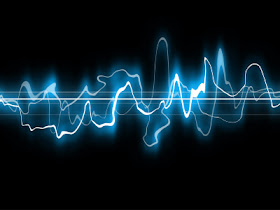May 14 is the birthday of Sidney Bechet, one of the bedrock performers in jazz. Great player, but whenever I hear Bechet blow, I want him to take about 35% off his vibrato. On the other hand, you could drive a charette through Louis Armstrong's vibrato, but it connects with me while Bechet's doesn't.
My emotional responses not withstanding, Bechet and Armstrong both fall in the category of "hot" players and, in general, the degree to which a player utilizes vibrato marks him as either "hot" or "cool."
 It's the most straightforwardly emotional part of the arsenal that horn players, especially trumpet players, can call on, some of which I mentioned in my Lee Morgan post: half-valve, smears, shakes, rips, growls, flutter-tonguing, double and triple tonguing, false fingering and vibrato.
It's the most straightforwardly emotional part of the arsenal that horn players, especially trumpet players, can call on, some of which I mentioned in my Lee Morgan post: half-valve, smears, shakes, rips, growls, flutter-tonguing, double and triple tonguing, false fingering and vibrato. Vibrato is hard to hear in short notes, so it's mostly about held tones: quarter, half or whole notes. It can be applied either through the player's lips or through his hands moving the horn at whatever rate he wants the vibrato to be (more violent hand movements become "shakes").
Vibrato as exemplar of hot and cool goes back pretty far into jazz history. It's been personified by the difference between Louis Armstrong and Bix Biederbecke, or Coleman Hawkins and Lester Young. Miles Davis brought the cool approach pretty much as far as it would go, but while the notion of "cool" became bundled with less vibrato. everyone, even MIles, has some vibrato in their playing. Hot or cool is less a question of whether it's there, but how "heavy" or "wide" it is; how subtle or overt.
 |
| Wild Bill |
Vibrato has been one way that improvisers-and, of course, musicians in general-have tried to communicate emotion to an audience. That kind of exposure to overt (unhip) emotion seems to have become less acceptable and/or less effective, in the jazz environment. Do improvisers still want to connect emotionally with an audience? Of course, but as I've said a few times here at Brilliant Corners, a lot of that emotional connection appears to be missing and seems to a large extent to reside more in the vocalist's domain.
[All the above links go to musical examples, so I hope you check them out].
Next time: Vocalists and Vibrato.



Thanks for this interesting topic, Steve.
ReplyDeleteThe same here: My biggest problem with Sidney Bechet is his vibrato. That's why his LP's are rarely spinning here.
Pops' vibrato is merely that of a vocalist, and it's tasteful, and natural; that's why it's less, if at all, annoying.
It's always a relieve to listen to the later Harry James, after I heard one or two of his tearjerkers of the mid-1940's (more are not bearable).
He could play completely without vibrato which could create an almost "demonic" atmosphere, especially when he played a ballad like "Spring Can Really hang You Up The Most".
I love Kenny Dorham's vibrato which is the most subtle of them all. Dizzy used almost no vibrato at all while Bird *did* vibrate quite a bit, despite the opinions of some obviously deaf critics who tried to tell us, bebop used less vibrato.
Anyway, talking about vibrato is science of its own.
Brew- You're right-vibrato is a science and I just barely touched on it in. KD had a great compact sound which also had some vibrato that made it very warm. To me, that's the difference between Bechet and Pops vibrato-one is warm, the other a little chilly and brittle.
ReplyDeleteI think swing vibratto-James, Klein, Elman, could use its own post. Maybe we should co write it. Steve
In what was once called "Modern Jazz," vibrato is often most effectively used as a spice. One example would be a bit of vibrato at the end of a held note.
ReplyDeleteYup, the end of a held note is a logical place for it... For me, even though vibrato has been more important in earlier styles, it was always a "spice." That is, it was a garnish and not the meat and spuds. I suppose another comparison would be to garlic. Some people think you can never use enough. Others do.
ReplyDeleteI'm looking forward to your commentary on the use of vibrato by vocalists. For me, the proper (i.e., scant) use of vibrato is one of the hallmarks to distinguish a "jazz singer" from a singer dabbling in jazz.
ReplyDeleteIn my opinion, the only jazz singers who can use more vibrato without detriment (beautifully, in fact) are Sarah Vaughan and Andy Bey.